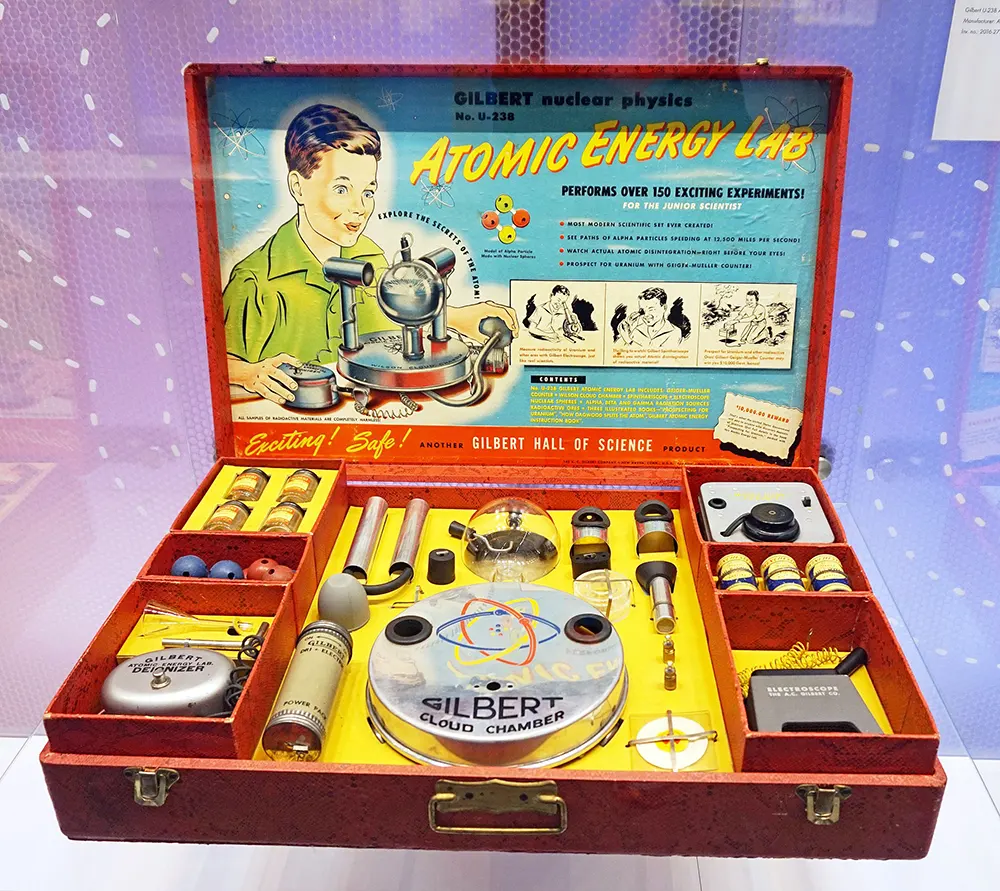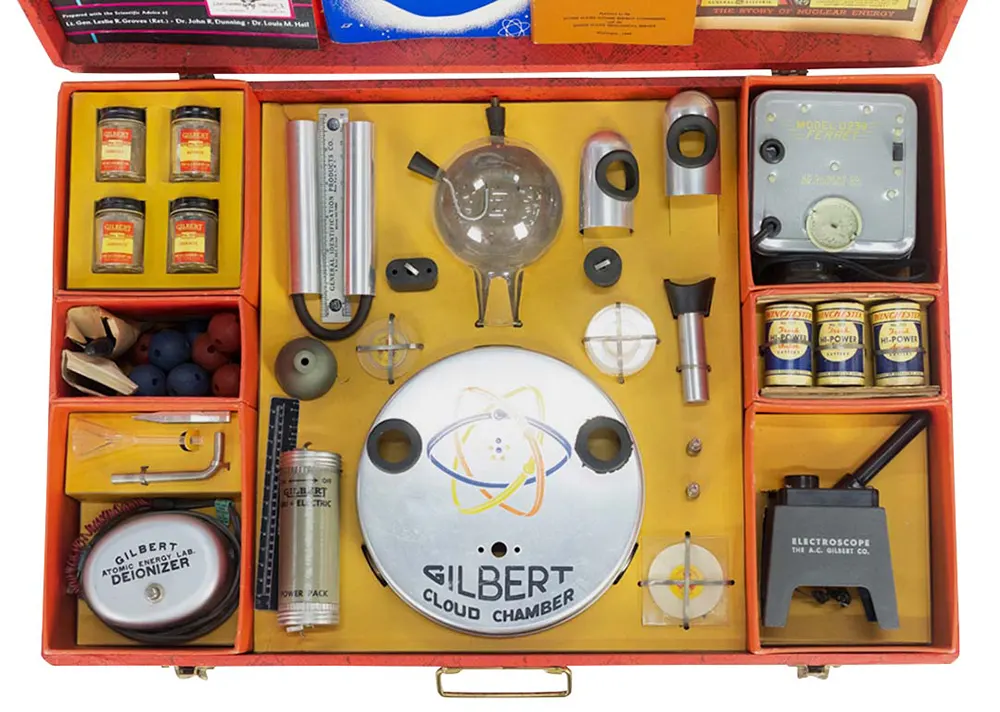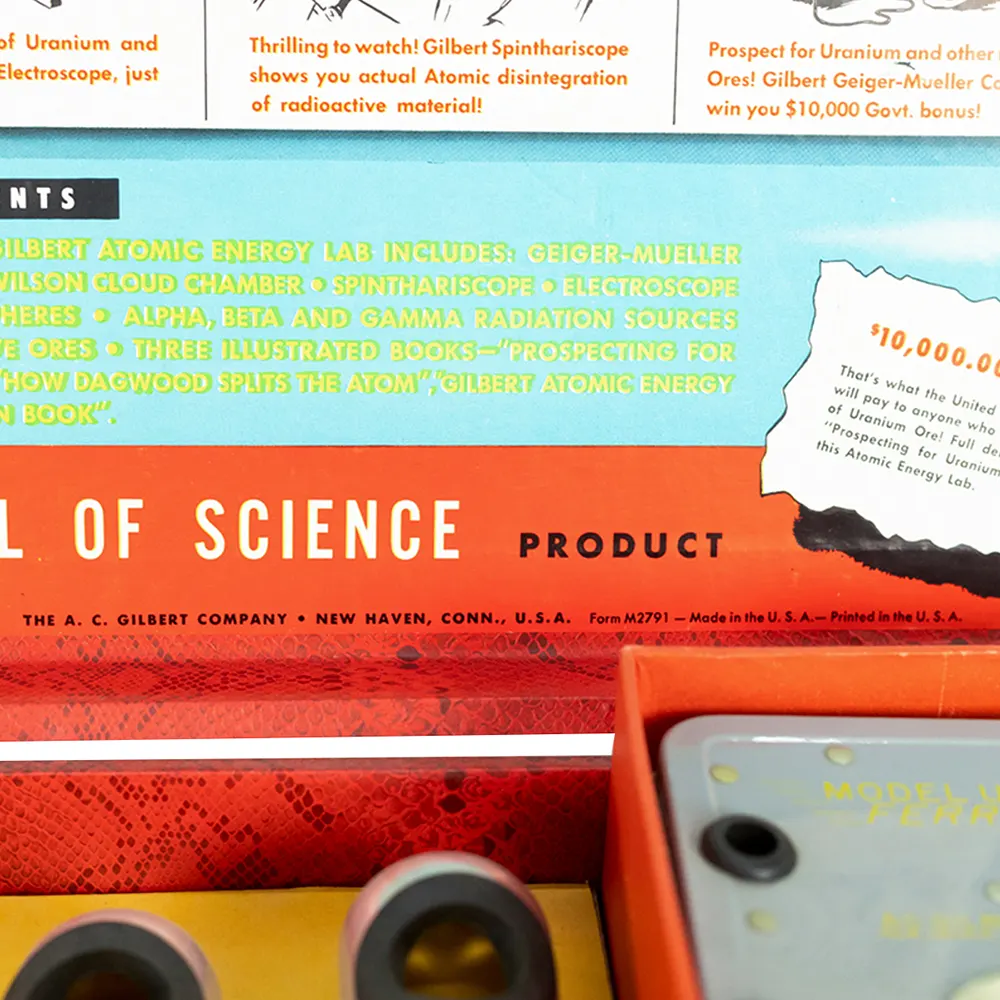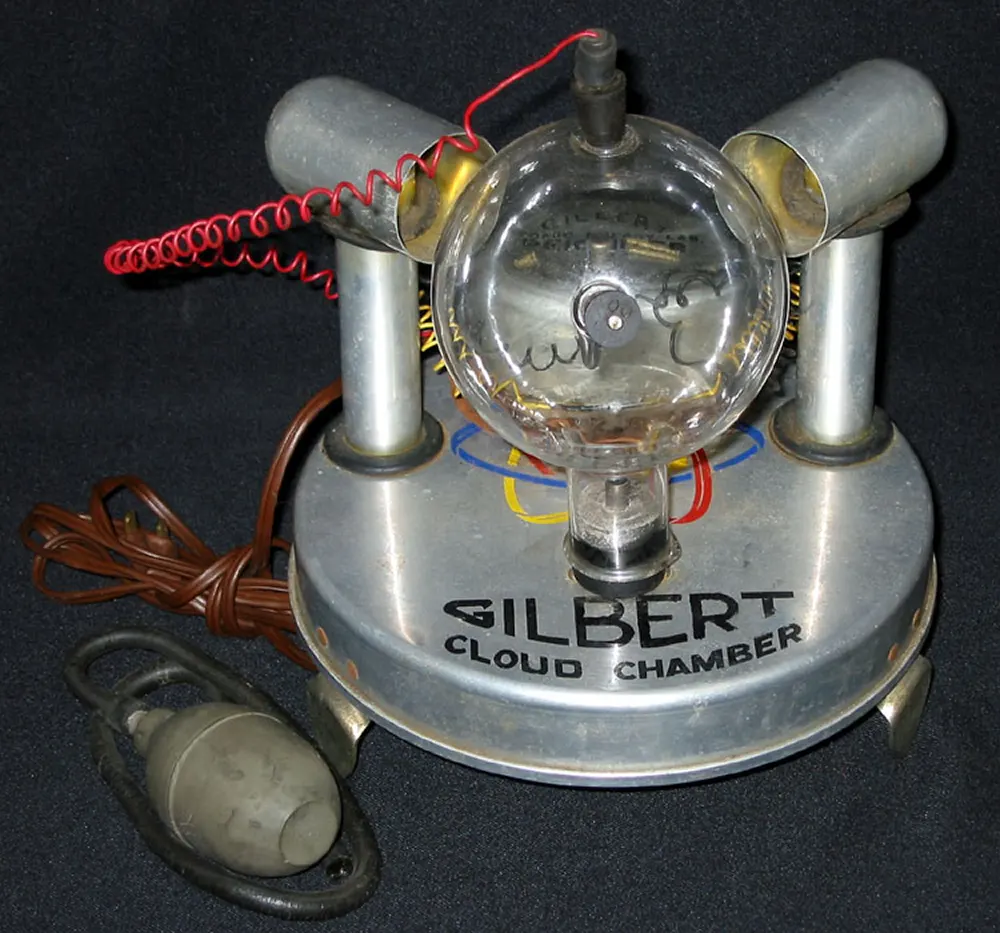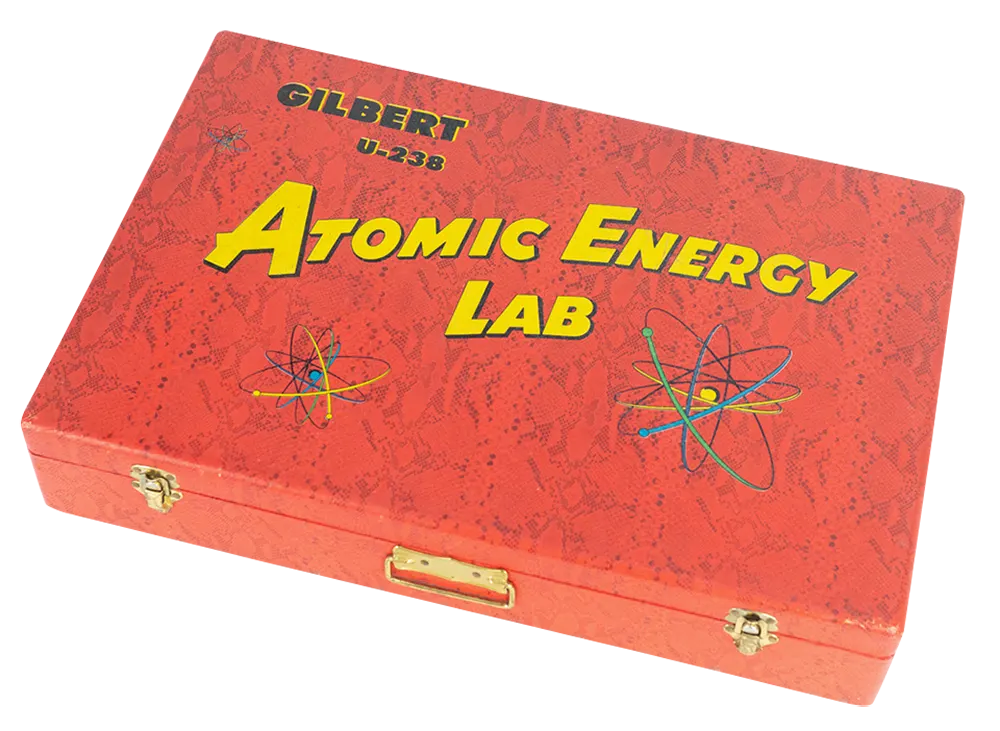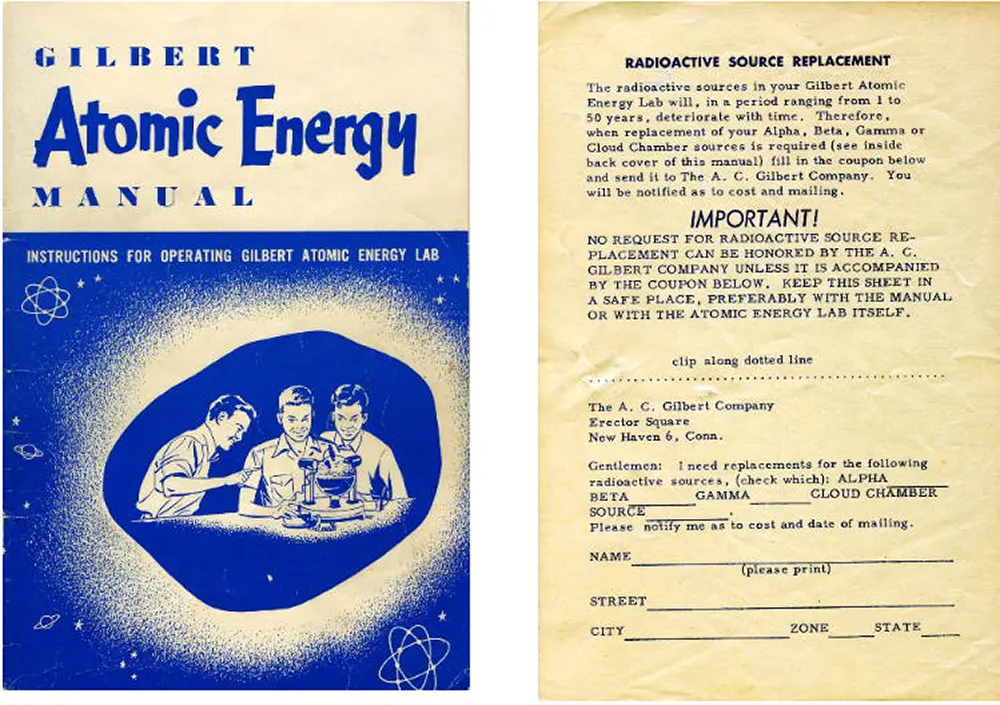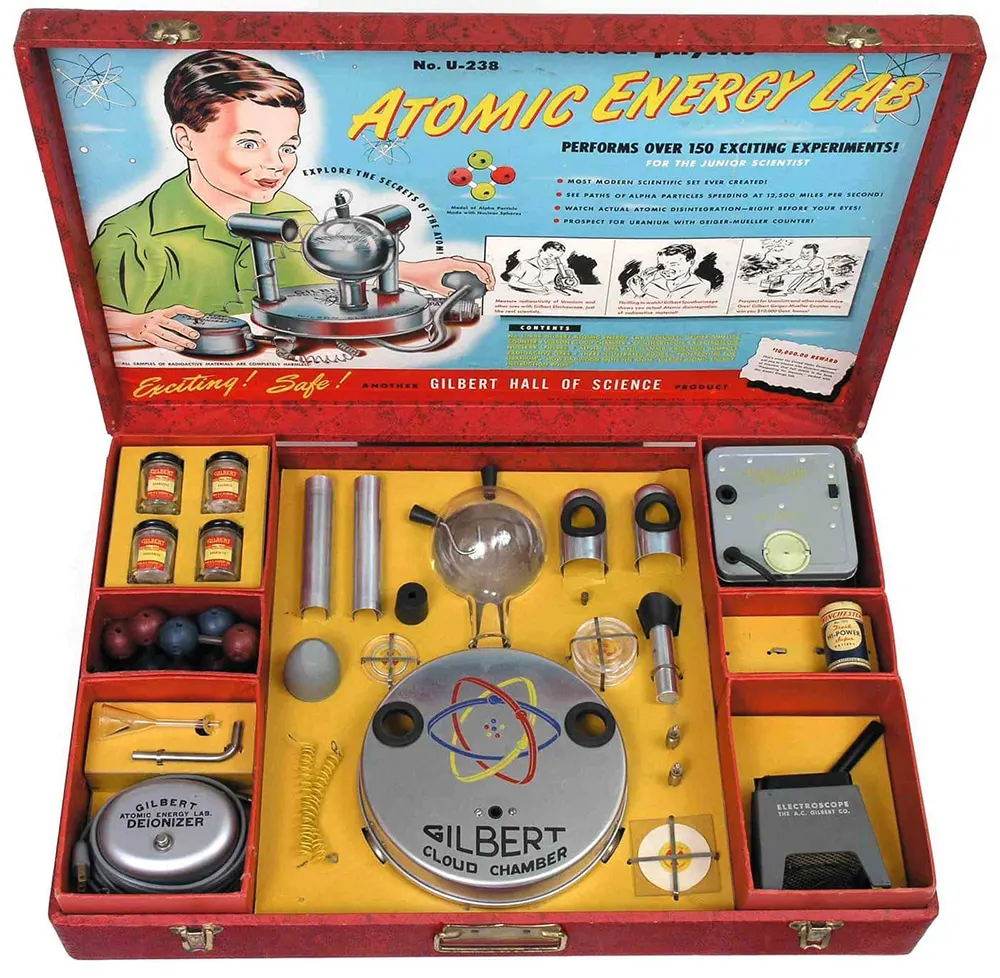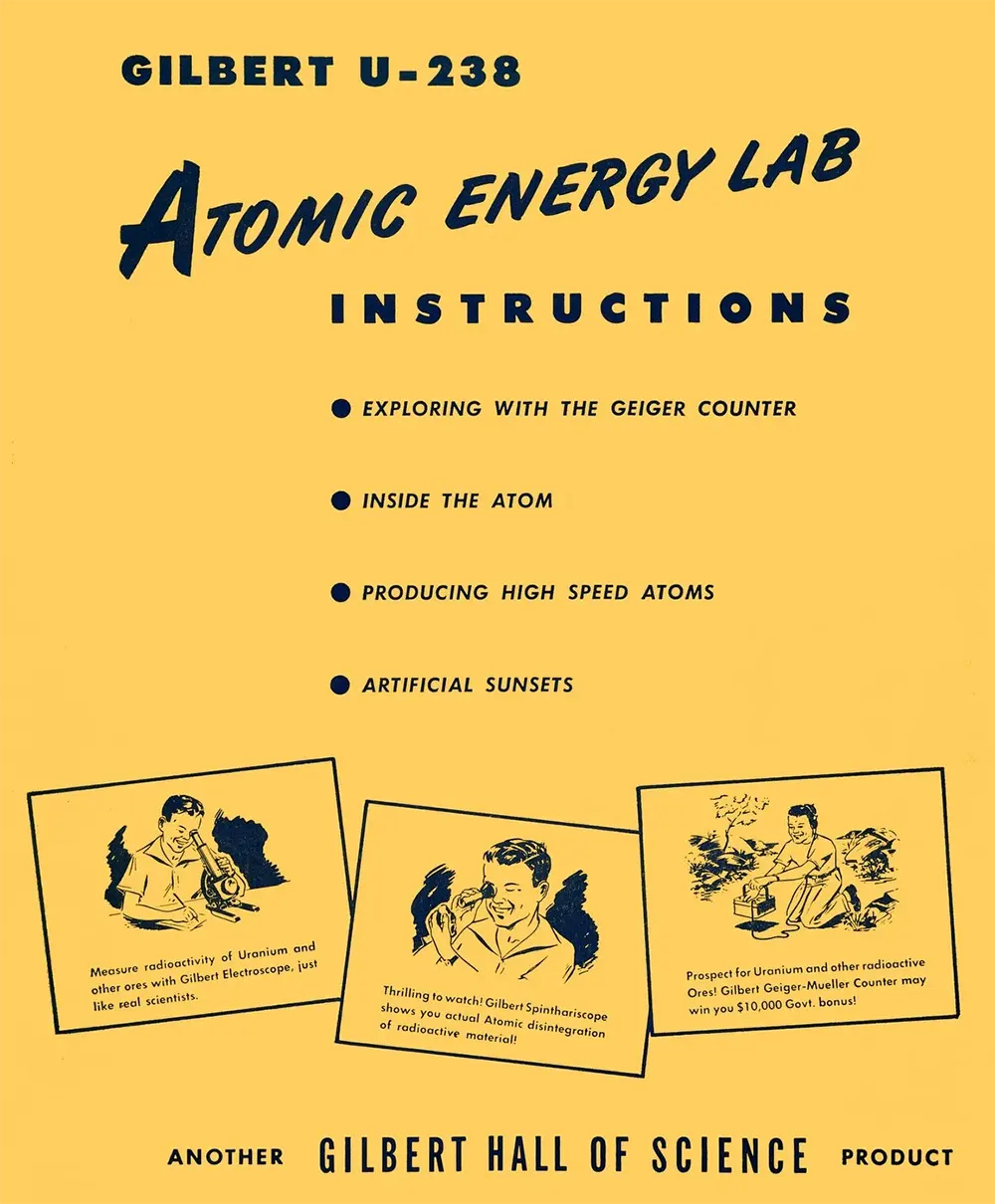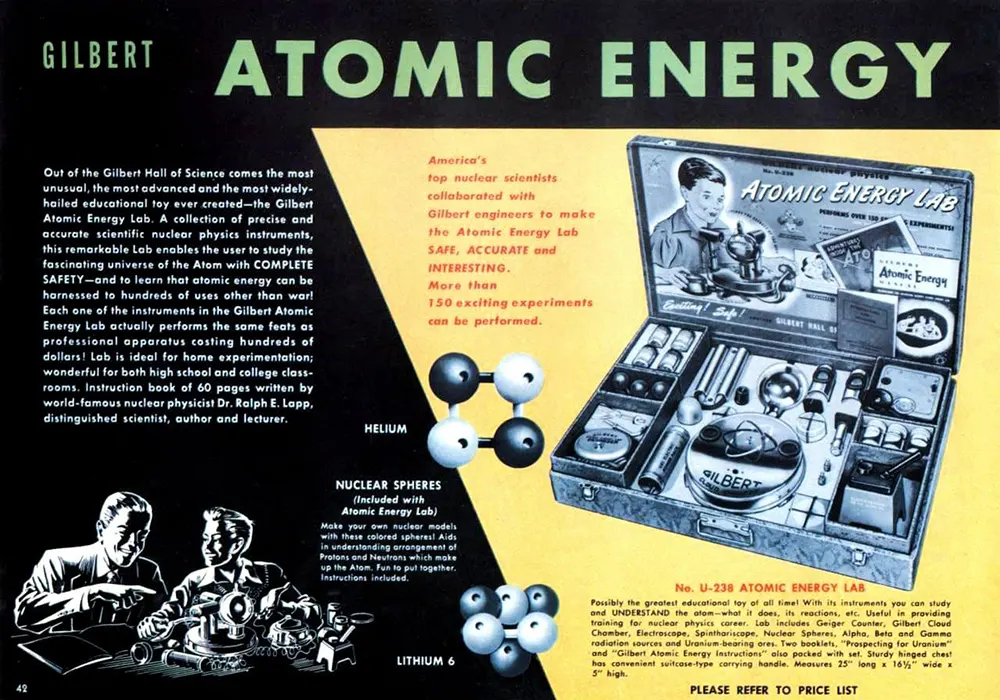Amidst the fervor of the atomic age, a remarkable and audacious creation emerged, capturing the hearts and minds of children with its promise of scientific marvels. Enter the Gilbert U-238 Atomic Energy Lab Kit, a truly extraordinary and daring educational toy that brought the wonders of nuclear science right into the hands of intrepid young explorers. Conceived by the ingenious mind of Alfred Carlton Gilbert, a visionary toy inventor and relentless advocate for science education, the Atomic Energy Lab Kit was a daring experiment in itself. Released in 1950, it stood as a bold testament to an era when atomic power was both revered and enigmatic, embodying the spirit of scientific exploration that defined the time. The Gilbert U-238 Atomic Energy Lab was an actual radioactive toy and learning set. The $49.50 set came with four samples of uranium-bearing ores (autunite, torbernite, uraninite, and carnotite), as well as a Geiger-Mueller radiation counter and various other tools. The set also came with a comic book featuring Dagwood from the popular Blondie comic strip. It was titled “Learn How Dagwood Splits the Atom” and written in conjunction with General Leslie Groves, director of the Manhattan Project. The kit was created by Alfred Carlton Gilbert, who was an American athlete, magician, toy-maker, business man, and inventor of the well-known Erector Set. Gilbert believed that toys were the foundation in building a “solid American character”, and many of his toys had some type of educational significance to them. The Atomic Energy Lab was just one of a dozen chemical reactions lab kits on the market at the time. Gilbert’s toys often included instructions on how the child could use the set to put on his own “magic show”. For parents, he pushed the idea that the sets’ use of chemical reactions directed their children toward a potential career in science and engineering. The lab contained a cloud chamber allowing the viewer to watch alpha particles traveling at 12,000 miles per second (19,000,000 m/s), a spinthariscope showing the results of radioactive disintegration on a fluorescent screen, and an electroscope measuring the radioactivity of different substances in the set. Gilbert’s original promotions claimed that none of the materials could prove dangerous. The instructions encouraged laboratory cleanliness by cautioning users not to break the seals on three of the ore sample jars. For “they tend to flake and crumble and you would run the risk of having radioactive ore spread out in your laboratory. This will raise the level of the background count”, thus impairing the results of experiments by distorting the performance of the Geiger counter. The Gilbert catalog copy included the reassurance that “All radioactive materials included with the Atomic Energy Lab have been certified as completely safe by Oak-Ridge Laboratories, part of the Atomic Energy Commission.” The set originally sold for $49.50 (equivalent to $560 in 2021) and contained the following:
Battery-powered Geiger–Müller counter Electroscope Spinthariscope Wilson cloud chamber with short-lived alpha source (Po-210) in the form of a wire Four glass jars containing natural uranium-bearing (U-238) ore samples (autunite, torbernite, uraninite, and carnotite from the “Colorado plateau region”) Low-level radiation sources: beta-alpha (Pb-210) pure beta (possibly Ru-106) gamma (Zn-65) “Nuclear spheres” for making a model of an alpha particle Gilbert Atomic Energy Manual — a 60-page instruction book written by Dr. Ralph E. Lapp Learn How Dagwood Split the Atom — comic book introduction to radioactivity, written with the help of General Leslie Groves (director of the Manhattan Project) and John R. Dunning (a physicist who verified fission of the uranium atom) Prospecting for Uranium — a 1949 book published jointly by the Atomic Energy Commission and the United States Geological Survey Three C batteries 1951 Gilbert Toys catalog
A product catalog described the set as follows: “Produces awe-inspiring sights! Enables you to actually SEE the paths of electrons and alpha particles traveling at speeds of more than 10,000 miles per SECOND! Electrons racing at fantastic velocities produce delicate, intricate paths of electrical condensation – beautiful to watch. Viewing Cloud Chamber action is closest man has come to watching the Atom! Assembly kit (Chamber can be put together in a few minutes) includes Dri-Electric Power Pack, Deionizer, Compression Bulb, Glass Viewing Chamber, Tubings, Power Leads, Stand, and Legs.” Among other activities, the kit suggested “playing hide and seek with the gamma ray source”, challenging players to use the Geiger counter to locate a radioactive sample hidden in a room. Upon its release, the Gilbert U-238 Atomic Energy Lab Kit garnered significant attention and praise. It was seen as a revolutionary tool for science education, encouraging children to explore the realms of atomic energy and fostering a sense of scientific inquiry. The kit even received endorsements from prestigious scientific organizations, such as the American Institute of Physics and the Chicago Museum of Science and Industry. However, the Atomic Energy Lab Kit was not without controversy. As awareness of the potential risks associated with radioactivity grew, concerns were raised about the safety of exposing children to radioactive materials, no matter how minimal the levels. Critics argued that the kit promoted potentially dangerous activities and raised doubts about the appropriateness of such a toy for young minds. In response to these concerns, Gilbert took measures to address safety issues. The instruction manual stressed the importance of handling the materials responsibly, avoiding prolonged exposure, and maintaining a safe distance from the radioactive sources. Gilbert also enlisted the expertise of scientists and educators to ensure that the kit provided a balance between scientific education and safety precautions.
Criticism of Gilbert U-238 Atomic Energy Laboratory
In 2006, the pop culture publication Radar Magazine called the lab set one of “the 10 most dangerous toys of all time, … excluding BB guns, slingshots, throwing stars, and anything else actually intended to inflict harm”, because of the radioactive material it included (it was number 2 on the list; number 1 was lawn darts). The professional journal IEEE Spectrum published a more-detailed review in 2020, discussing the kit in the context of the history of science education kits and safety concerns. It described the likely radiation exposure as “minimal, about the equivalent to a day’s UV exposure from the sun”, provided that the radioactive samples were not removed from their containers, in compliance with the warnings in the kit instructions. The Bulletin of the Atomic Scientists published a brief article on the web, which featured Voula Saridakis, a curator at the Museum of Science and Industry (Chicago) hosting a detailed video tour of the Atomic Energy Lab components. She concluded by saying that the kit failed to sell because of its high price, and not due to any safety concerns at the time.
(Photo credit: Wikimedia Commons / Flickr / Pinterest). Notify me of new posts by email.
Δ Subscribe
